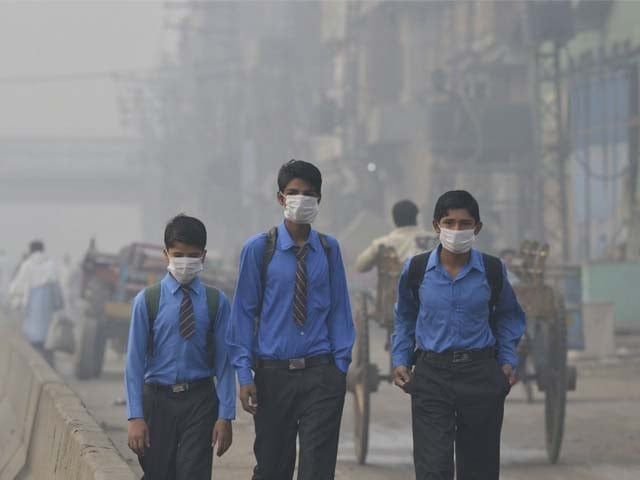The wind in Punjab blows from east to west, bringing polluted air from Indian regions into Pakistan
Air pollution and smog levels across Punjab continue to worsen, with Faisalabad overtaking Lahore as the most polluted city, recording an air quality index (AQI) of 554. Gujranwala and Multan followed, while Lahore’s AQI reached 471 this morning.
According to the global air quality monitoring organization, IQAir reports that Gujranwala recorded an AQI of 546, Multan 478, Lahore 471 and Bahawalpur 389. Government figures show AQI levels of 500 in DG Khan, Gujranwala and Kasur; 447 in Lahore; 408 in Faisalabad; and 352 in Multan.
Air quality in several parts of Lahore has reached extremely hazardous levels, with readings of 980 at Forest Department Office on Ravi Road, 790 at G3 Engineering Council and 759 at DHA Phase 8. Meanwhile, the Punjab Air Quality Index registered 500 at Burki Road and Egerton Road, 394 at Wagah Border Park and 384 Border.
According to the Smog Monitoring and Forecasting System, the wind in Punjab blows from east to west, bringing polluted air from Indian regions including Haryana, Ludhiana, Patiala and Jalandhar into Pakistan. These winds affect air quality in Lahore, Faisalabad, Kasur and Gujranwala.
Read: Lahore tops Global Pollution Index; AQI reaches 985 in some areas
Experts warn that the accumulation of fine particles is worsening pollution levels, with the AQI expected to remain between 330 and 370 today. The environment ministry says air quality in Lahore will remain unhealthy, especially in the early morning, evening and late night hours, with a slight improvement between 13.00 and 17.00. The public, especially children, the elderly and patients, are advised to avoid unnecessary outdoor exposure.
Punjab Senior Minister Marriyum Aurangzeb stated that on the directions of Chief Minister Maryam Nawaz, anti-smog measures have been expedited. Twelve provincial departments are implementing a joint action plan enforcing zero tolerance for crop residue burning. Over 10,000 notices have been issued, while more than 190 factories and brick kilns have been inspected, many sealed and heavily fined.
Read more: Lahore tops global pollution rankings as AQI hits ‘dangerous’ 403
She added that only eco-friendly zigzag technology brick kilns are allowed to operate. Over 1,200 monitoring teams conduct on-site inspections and fines, while SOPs for dust control at construction sites are strictly enforced. The Punjab government, she said, is committed to protecting public health, eliminating smog causes and restoring clean air in the province.



